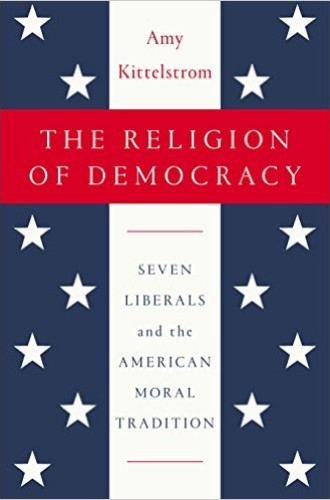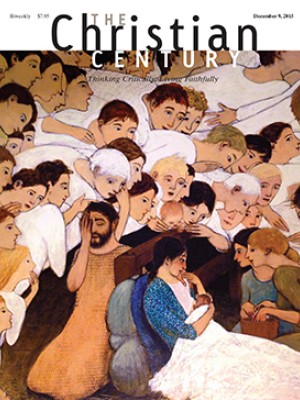The Religion of Democracy, by Amy Kittelstrom
Amy Kittelstrom examines the overlapping ideas, personalities, and relationships of seven key figures associated with what she calls the American Reformation. Her study concentrates on the 19th century, when Puritanism had already become New England Congregationalism, which then informally divided into two separate streams: the liberal and the neo-Calvinist or evangelical.
Kittelstrom’s interest is in the liberal stream, which, she argues, emphasized three tenets of the American Reformation: the priority of individual judgment in all religious matters, the value and necessity of moral agency, and a commitment to open-minded inquiry. These ideas were incipient in the European Reformation, and they had singular significance for the Christian (and later post-Christian) Reformation that took root in New England and gradually became, in the ambiguous phrase first used by William James, “the religion of democracy”: the liberal tradition was a religion well suited both to the formation of democracy and to the development of what might well be called the religion of democracy.
Read our latest issue or browse back issues.
Kittelstrom illustrates her argument with a rich study of her seven figures, who are situated along a spectrum of religious liberalism. She begins with John Adams, whose peculiar conservatism was based on his adherence to the liberal tenets of his Congregational faith: the individual as moral agent, the duty of the individual to seek truth, and the fallibility of all absolute claims to truth.
Rather than discretely focusing on each of her seven figures in turn, Kittelstrom illuminates the interrelated and overlapping relationships, experiences, societies, and kinships that bound together their lives and their arguments.
She includes chapters in which the central figure is Mary Moody Emerson, the traditionally pious, open-minded Congregationalist aunt of Ralph Waldo Emerson; William Ellery Channing, the liberal Congregationalist minister often considered the founder of American Unitarianism; William James, who never embraced a particular religion of any kind, but whose profound interest in religion motivated both his belief in a pluralistic universe and his appreciation for the unique value and power of faith; and Thomas Davidson, a Scottish emigrant and one of James’s companions, whose embrace of religious diversity and social passion deeply influenced many American thinkers, including the subject of two more chapters: William Mackintire Salter, James’s brother-in-law, who was first a Congregationalist minister, then a Unitarian minister, and finally one of the founders of the Ethical Culture Society in New York and Chicago; and Jane Addams, a Presbyterian whose dedication to realizing a just and equal community at Hull House in Chicago coincided with Salter’s time in that city.
Kittelstrom both celebrates these liberal figures’ contributions to the developing religion of democracy and notes their blind spots. Adams would have extended suffrage only to men of property. Emerson was both empowered and constrained by the gendered categories of her time. Channing and James both were persons of great economic privilege. Davidson and Salter attempted to transcend the economic and social divisions that contradicted their beliefs, but their achievements in this regard were mainly personal and intellectual. Only Addams fully embodied her creed through both deliberation and social action.
A hallmark of the liberalism Kittelstrom describes is determined open-mindedness: an awareness that because only God has full truth, individuals must temper their own claims to truth by listening carefully to and valuing the contributions of those who see things differently. She also notes a certain paradox in liberalism: when it becomes a fixed dogma, it ceases to be liberal and becomes instead part of the imposed doctrine that the American Reformation always opposed.
Kittelstrom contends that the period of the American Reformation began in 1749 when the Adams family’s pastor delivered a sermon that greatly affected John Adams, and that it ended with Jane Addams’s death in 1935. But, Kittelson maintains, the tradition itself has not died. Though rooted in religious faith, it now embraces many who claim no faith. It “lives on among activists and religious leaders who engage across lines of difference,” and it continues where “humility, sincerity, and openness remain virtues even in a postmodern society of spin and hype, flash and glitz.”
The Religion of Democracy is an extremely well-researched and interesting description of the sustaining arguments and tenets of the American Reformation, as well as an informative portrayal of the complex lives of some of its central figures.







